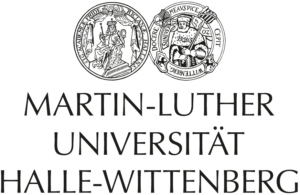Study of interfacial layer in polymer nanocomposite by proton solid state NMR
by Mozhdeh Abbasi
Organization and interactions of eye-lens crystallins
by Malte Neudorf
Location: MLUconf
Time: 15.20 – 17.00
Chair: Yu Qiang
Study of interfacial layer in polymer nanocomposite by proton solid state NMR
Mozhdeh Abbasi1, Sol Mi Oh2, So Youn Kim2, Kay Saalwächter1
1Martin Luther University Halle-Wittenberg, Halle, Germany
2UNIST, Ulsan, South Korea
In recent years the critical role of the interfacial layer and how they can control the macroscopic properties of polymer nanocomposites has received a lot of attention. The dynamics of polymers are influenced by the interface and changed relative to the bulk polymer [1]. Here, we analyse the structure and dynamics of the interfacial region in model polymer nanocomposites with well-dispersed, spherical silica nanoparticles in poly ethylene oxide (PEO) [2]. We discuss several experimental NMR techniques that provide structural and dynamic information.
[1] Ivan Popov, Bobby Carroll, Vera Bocharova, Anne-Caroline Genix, Shiwang Cheng, Airat Khamzin, Alexander Kisliuk, and Alexei P. Sokolov, Macromolecules 2020, 53, 4126−4135
[2] Sol Mi Oh, Mozhdeh Abbasi, Tae Joo Shin, Kay Saalwächter, and So Youn Kim, Phys. Rev. Lett. 2019,123, 167801
Organization and interactions of eye-lens crystallins
Malte Neudorf
Crystallins are important in the eye lens to ensure our vision. In contrast to other proteins, they do not get degraded and replaced over time. The eye lens proteins have to remain stable and functional through the whole life. If this fails, cataract can occur. In order to understand cataract formation processes it is important to understand the function of each protein class (α,β,γ- crystallin) in their highly crowded environment in the eye lens. Furthermore, we want to understand how aging processes (eg. post-translational modifications), environmental stress (eg. UV damage) or mutations can change the functionalities and properties of crystallins. Since different protein classes are involved in cataract formation, we only focus on γD-crystallin which is one of the most abundant proteins in the eye lens. γD-crystallin can undergo liquid liquid phase separation (LLPS) with an upper critical solution temperature (UCST) behavior. This phenomenon occurs in the metastable regime of the phase diagram, out of this phase the protein can form crystals, aggregates or fibrils. The scientific questions are:
(I) How do the dynamics, interactions and the tertiary structure change in the densed phase,
(II) can LLPS of γD-crystallin lead to cataract formation and
(III) which impact do the upper mentioned changes of γD-crystallin have on the LLPS and cataract formation? To answer these questions we employ different biophysical techniques such as light scattering, SAXS and NMR spectroscopy.




